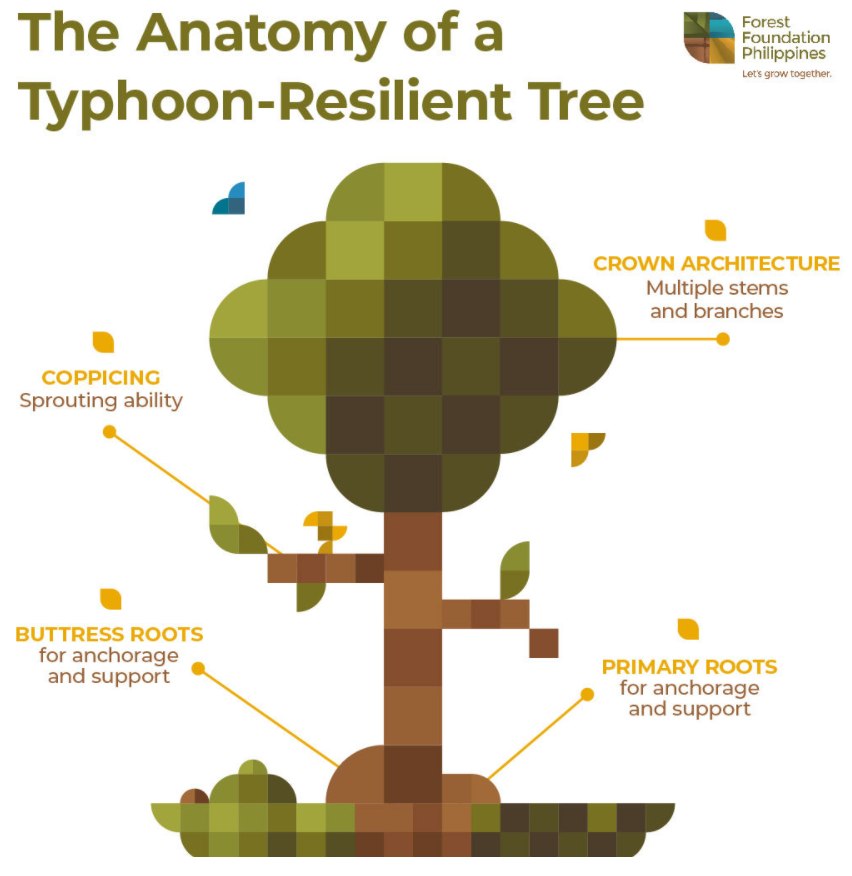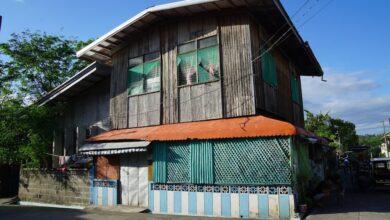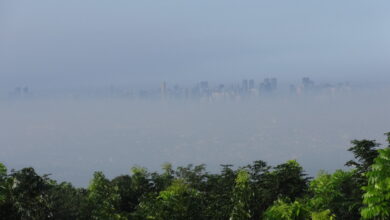
Typhoon-Resilient Trees: Our First Defense Against Natural Disasters
Being hit by over 20 typhoons every year, the Philippines remains one of the most vulnerable nations in the world. Natural calamities have become regular to the Philippines mainly because of the country’s geography. The Philippines sits above the equator, facing the western Pacific; a part of the ocean where these storms are formed. In the fullness of time, these disasters have destroyed houses, wiped out harvests, and taken thousands of lives. However, nature also provides our first defense against them — our typhoon-resilient trees!
As we continue to experience the perils brought by climate change, typhoon-resilient trees remain our first defense against nature’s wrath. They have been vigorous in upholding the safety of not only our lives but also property essential to our society. Now, what exactly are these trees? And why should we urgently plant them?
Typhoon-resilient trees 101
As defined by Forest Foundation Philippines, typhoon-resilient trees are the kinds of trees that possess features and qualities strong enough to withhold heavy surges of winds primarily caused by typhoons. Just like other trees, these trees also aid in attenuating the harmful effects of climate change through their act of carbon sequestration; a process of eliminating carbon dioxide from the atmosphere by converting it to carbon during photosynthesis.

What makes these trees unique from other plants is their almost impenetrable design. Unlike other trees, which only have rootlets, typhoon-resilient trees have a varied arrangement of roots composed of tertiary, secondary, and primary roots. Primary roots are essential for the anchorage and support of the tree weight; therefore, making the tree stronger than usual.
Typhoon-resilient trees also have buttresses. This feature enables the trees to withstand heavy winds and flooding with the help of the large, wide roots found on the sides of their bases. These buttresses also pave a way for these trees to remain healthy by providing sufficient nutrients as they extend deeply into the ground. In the same manner that they spread on the surface, these buttresses can also grow vertically up to 15 feet tall.
In some cases, typhoon-resilient trees are also referred to as windbreak trees due to the fact they serve the same purpose. Generally, these trees protect mankind from the disastrous effects of natural calamities. Similarly, windbreak trees, being a kind of typhoon-resilient tree, do too. The only difference is that windbreaks are typically used on farms to protect produce and livestock. Either way, both of these arboreal species collaboratively provide safety and protection towards the people during nature’s trying times.
Native guardians
Over the years, typhoon-resilient trees have managed to somewhat mitigate the damages caused by typhoons. This just shows that these trees really do play a major role in the refuge of the people, and that the native ones found here in the country are badly needed by Filipinos.
As an archipelago rich in biodiversity, the Philippines has an abundant species of native trees; ranging from windbreaks to mangroves. Native trees are plants that have naturally grown within the country’s rich and fertile soil for ages. Since they are indigenous, they are made to withstand extreme local weather. On the other hand, alien or exotic trees such as acacia, gmelina, mahogany, and tulip are susceptible to damage caused by typhoons. Whenever a typhoon strikes, the ones that survive are often the native ones.
Some examples of native typhoon-resilient trees found in the Philippine islands are:
- Bitaog (Calophyllum inophyllum)
- Kamagong (Diospyros blancoi)
- Katmon (Dillenia philippinensis)
- Bignay (Antidesma bunius)
- Narra (Pterocarpus indicus)
- Pili (Canarium ovatum)
- Agoho (Casuarina equisetifolia)
- Baguilumbang (Reutealis trisperma)
- Bani (Pongamia pinnata)
- Molave (Vitex parviflora)
- Talisay (Terminalia catappa)
What all these trees have in common is that they serve as windbreak trees, which means that they protect both the lives and the livelihood of the people in their immediate vicinity. However, another common denominator of these trees is the fact that they lack occupancy in places where they are extremely needed.
READ – Wind Turbines in Batanes: A New Source of Clean Energy
Why we must plant them
There are several factors on why the preservation and rehabilitation of typhoon-resilient trees must concern all of us. First is the worsening situation of deforestation. According to Global Forest Watch, from 2010-2020, the country had lost over 46.8kha of its forests. This numerical data shows that the Philippines’ forest coverage destructively dropped from 70 to 20 percent. Such dropping is primarily caused by destructive practices such as illegal logging. With barely enough trees to protect us, the typhoons that enter the country become more disastrous and fatal. Due to this, more damages become evident and more casualties get recorded.
Another reason why typhoon-resilient trees must be multiplied is they host our local wildlife. These trees are the habitat of copious amounts of birds, insects, mammals, and even micro-organisms. Along with the threatening reduction of such trees, the shelter of these animals begins to deteriorate. And as an unfortunate result, these living organisms will eventually vanish from the ecosystem which once served as their home.
Overall, typhoon-resilient trees are essential for the continuance of human life. Not only do they protect mankind from storms, but they also shield other essential parts of our society necessary for our survival. The Philippines is home to a variety of these trees, which is why we must protect them at all costs. This issue must be raised as a national concern to be able to inspire collective efforts. If we won’t act imperatively, the aforementioned gains are for us to lose. When that time comes, the green guardians won’t be there to safeguard our lives anymore; leaving us no other choice but to face the lethal rage of nature all by ourselves.




